If you’ve recently sprained your ankle, you are not alone. Nearly 25,000 people suffer an ankle sprain each day. Over 2 million people sprain their ankles each year. Needless to say, ankle sprains are one of the most common injuries out there.
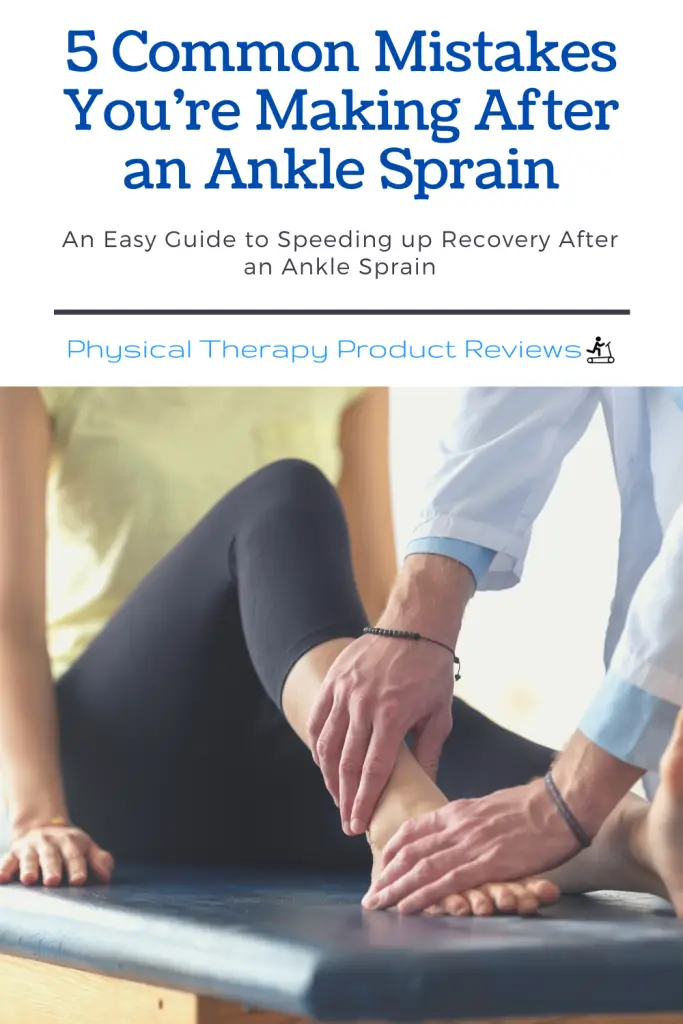
However, one might think that because they are so common that we would have the recovery process completely figured out. Sadly this isn’t the case.
In fact, we see people making more mistakes when recovering from an ankle sprain than doing more good. If your ankle sprain is taking forever to heal or it seems like it never did recover, you may be making some of these mistakes.
This blog post will review the 5 most common mistakes after an ankle sprain. Be sure to avoid these mistakes to heal quickly and get back to your full potential.
Waiting to Begin Treatment Until You See a Doctor
One of the most common mistakes after an ankle sprain is waiting to move it before seeing a doctor. You may think waiting will help the ankle heal faster and prevent further injury. Moving the ankle is uncomfortable, and you’re worried you could do more damage; we totally understand the logic.
However, this isn’t true! In fact, movement is essential for ankle healing. Motion helps increase blood flow to the ankle, which helps reduce swelling and inflammation. Movement and weight-bearing activities actually promote tissue repair.
If you avoid using the ankle, the injured ligaments can start forming scar tissue early. This scar tissue can be a pain to do with later as it’s uncomfortable to work through the remodeling process.
It’s best to start exercising the ankle immediately!
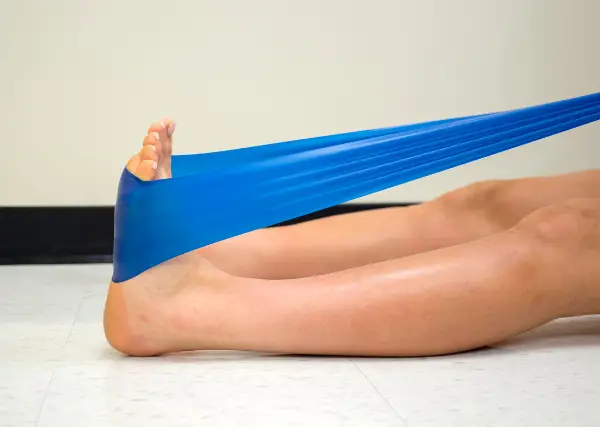
Seeing a doctor isn’t all that important anyways. A doctor is going to order an X-ray to see if it is broken and, in the meantime, send a prescription for physical therapy.
X-rays genuinely aren’t that helpful and only show injuries to the bone. You can be nearly sure the ankle is fractured or not by simply following the Ottawa ankle rules.
The Ottawa ankle rules state that if you have tenderness in specific locations on the ankle and cannot put pressure on the foot at certain time intervals, there is a high likelihood you sustained a fracture. If the tenderness is not in a specific location and you can walk on the ankle, the chances are quite slim that you’ve broken a bone.
Therefore, you shouldn’t wait to move your ankle until seeing a physician. You can tell with great accuracy if the ankle is broken. If you wait until you see the physician, you’ve lost valuable time that you should have already been working on your recovery.
The physician will look at your ankle for 2 minutes at the most and tell you to go to physical therapy once the x-ray is negative. Wouldn’t it be best to skip all that wasted time and start rehab exercises immediately?
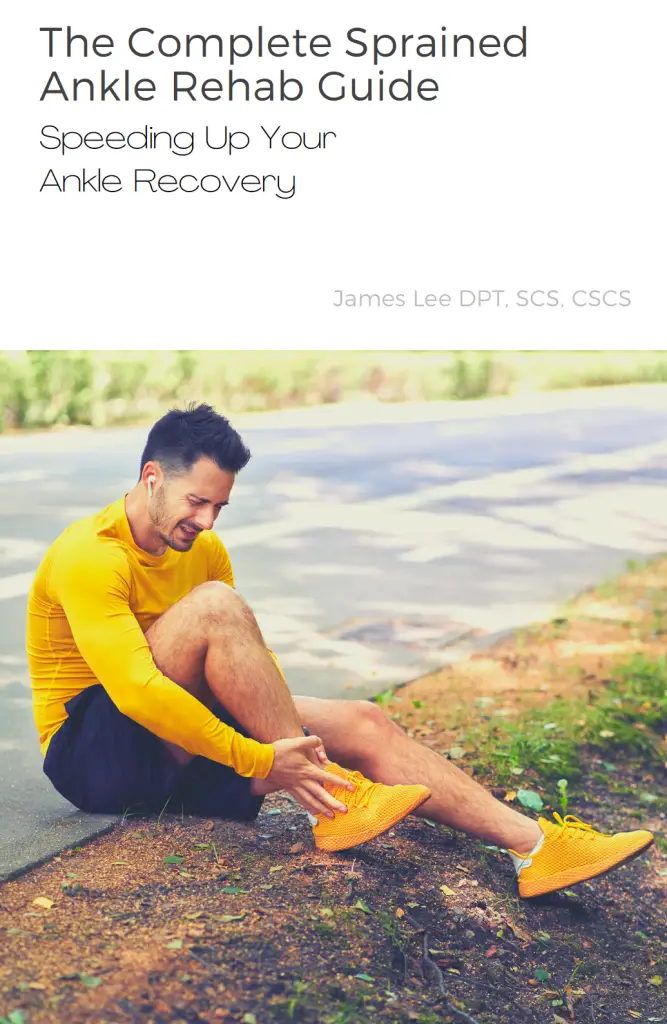
Want to feel more confident in your recovery? Don’t want to wait to see the Doctor? Check out our comprehensive guide to ankle sprain rehab to save you time and make a complete recovery.
Icing the Ankle Longer than Needed
One mistake some ankle sprain sufferers make is icing the ankle long after it’s needed. After an ankle sprain, you should ice the ankle for 15-20 minutes with 1 hour of rest in between. Some people believe that more ice is better and will help reduce swelling more quickly.
This couldn’t be further from the truth.
Icing for the first 48-72 hours after an injury is fine to do, especially to help with pain control more than anything.
Beyond those first few days, it’s time to give up on ice and look for other options. Ice delays healing and promote atrophy.
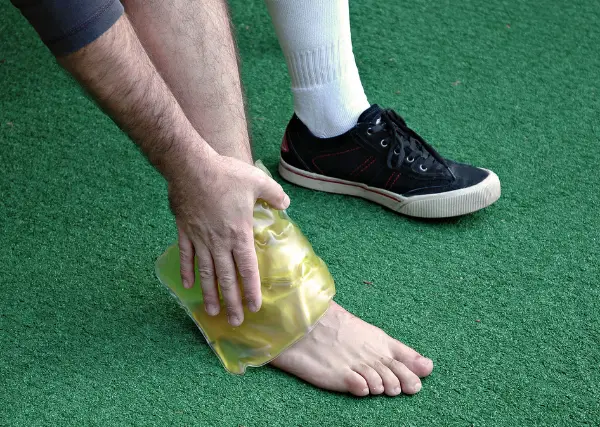
Better options include compression, elevation, movement, bracing, and light loading of the injured tendons to promote the repair process.
Ice, or cryotherapy, numbs the ankle and decreases blood flow. This can lead to delayed healing as ice prevents tissues from getting the nutrients that it needs to heal properly. Think of ice as numbing the ankle but causing the tissue repair process to take longer to do its job.
In addition, long-term icing takes up valuable time that you could be doing other more productive things for your ankle. If you continuously ice, you won’t be able to perform any ankle strengthening exercises, which will inevitably lead to a weaker ankle and a longer healing timeline.
It is important to note that ice does have its benefits and can help reduce swelling when used correctly and timely.
Taking Anti-Inflammatories Medication
Another common mistake is taking too many anti-inflammatories after an ankle sprain. This includes Ibuprofen, Advil, and other NSAIDs. Many ankle sufferers think that anti-inflammatory medication can help reduce the amount of swelling and speed up healing.

While it’s true that anti-inflammatories are good for reducing pain, there is no scientific evidence to show that it helps speed up healing and doesn’t affect the swelling as much as we would want.
In fact, research has shown that anti-inflammatories can slow down ankle healing due to their ability to inhibit the body’s natural inflammatory response.
Why would you want to take a medication that slows down the body’s healing process????
We want the ankle to be slightly inflamed so the tendons and ligaments can begin the necessary repair process, allowing for a full recovery and strong tendons.
Not only do most anti-inflammatory medications disrupt the healing process, but they can also lead to stomach issues and other complications. Therefore, avoiding taking these drugs for injuries such as ankle sprains is best. Compression and elevation work just as much magic without the unnecessary side effects.
Not Performing Enough Strength and Stability Exercises
If you have suffered an ankle sprain, don’t make the mistake of not performing ankle strength and stability exercises. Ankle sprains are serious injuries that require proper rehabilitation to heal fully. Simply letting time pass won’t be enough.
Doing ankle strengthening exercises will help restore your ankle back to its pre-injury state and can help reduce the risk of future ankle problems. It’s easy to forego this step once you start feeling better and “walk it off” until the pain is gone. An absence of pain does not indicate the injury is healed.
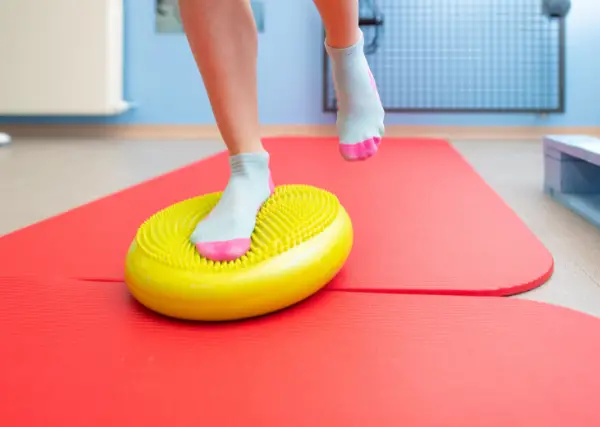
When ankle sprains occur, ankle muscles are weakened and damaged. This will require strengthening exercises to help build the tendons and muscles to be stronger and more resilient than before the injury. You should focus on ankle dorsiflexion exercises; calf raises, ankle eversion/inversion exercises, and hip control exercises.
Some of our favorite ankle-strengthening exercises can be found here. Follow these exercises to build a strong and stable ankle.
Additionally, ankle stability is also affected after an ankle sprain and needs to be addressed to help prevent recurrent ankle sprains. Doing ankle proprioceptive exercises will help improve your ankle balance and coordination, as well as ankle control and stability.
If done correctly and consistently, ankle strength and stability exercises can be the key to a successful ankle sprain recovery.

Want to feel more confident in your recovery? Don’t want to wait to see the Doctor? Check out our comprehensive guide to ankle sprain rehab to save you time and make a complete recovery.
Walking Unsupported on a Serious Sprain
The final mistake we’ll see in the clinic is the person who wants to tough it out and walks on a serious sprain without any extra support.
It could be the high cost of a doctor’s visit or the belief that the ankle will improve on its own, but going on a grade 3 ankle sprain without a walking boot or crutches could cause long-term damage and delay healing.
A grade 3 ankle sprain should be treated with immobilization and support. Don’t try to be a hero and walk on it without support, as this will only lead to a longer recovery time and an increased chance of re-injury.
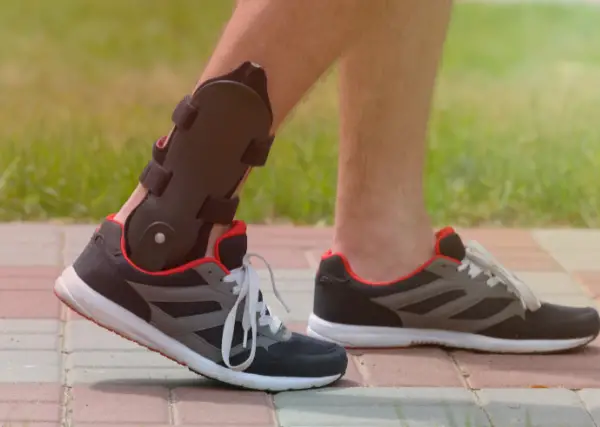
Here’s a quick way to assess if you have a grade 3 ankle sprain. If the ankle has moderate to severe swelling and considerable bruising and you can’t walk without a limp, you’ve suffered an advanced sprain.
Even if you don’t want to go to the doctor, you need to support the ankle for 6 weeks. Did you know that you can order the same walking boot online or a Controlled Ankle Motion boot (CAM boot) that the doctor would order?
We recommend a CAM boot like this Brace Direct walking boot for at least 6 weeks. It stabilizes the torn ligaments and lets you protect the tendons while walking normally.
You may also need to use crutches and the boot for a short period of time or until walking is no longer painful in the boot. After 6 weeks, the ligaments have had a chance to repair themselves without repeated damage to the new tissue.
If you decide to push through and not use a CAM boot or crutches, the ligaments and torn tendons never have a chance to repair in the proper position. These ligaments and tendons will be stretched out and weak, leaving the ankle at risk for future ankle sprains or, even worse Chronic Ankle Instability.
Conclusion
An ankle sprain is a common and painful injury that can have lasting effects if not treated properly. We’ve outlined the five common mistakes to avoid after an ankle sprain. If you take our advice – compression, elevation, strength, and stability exercises, and support your ankle with a CAM boot – then you will have the best chance of healing your ankle sprain and reducing the risk of future ankle sprains. Good luck with your ankle sprain recovery!
If you have any questions or would like to know more, please leave a comment below. We’d be happy to help. Thanks for reading!
Thanks for reading, and we wish you the best in your ankle sprain recovery.
Disclaimer: The information provided in this post is for educational purposes only. This is not a substitute for a medical appointment. Please refer to your physician before starting any exercise program.

